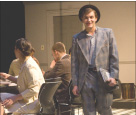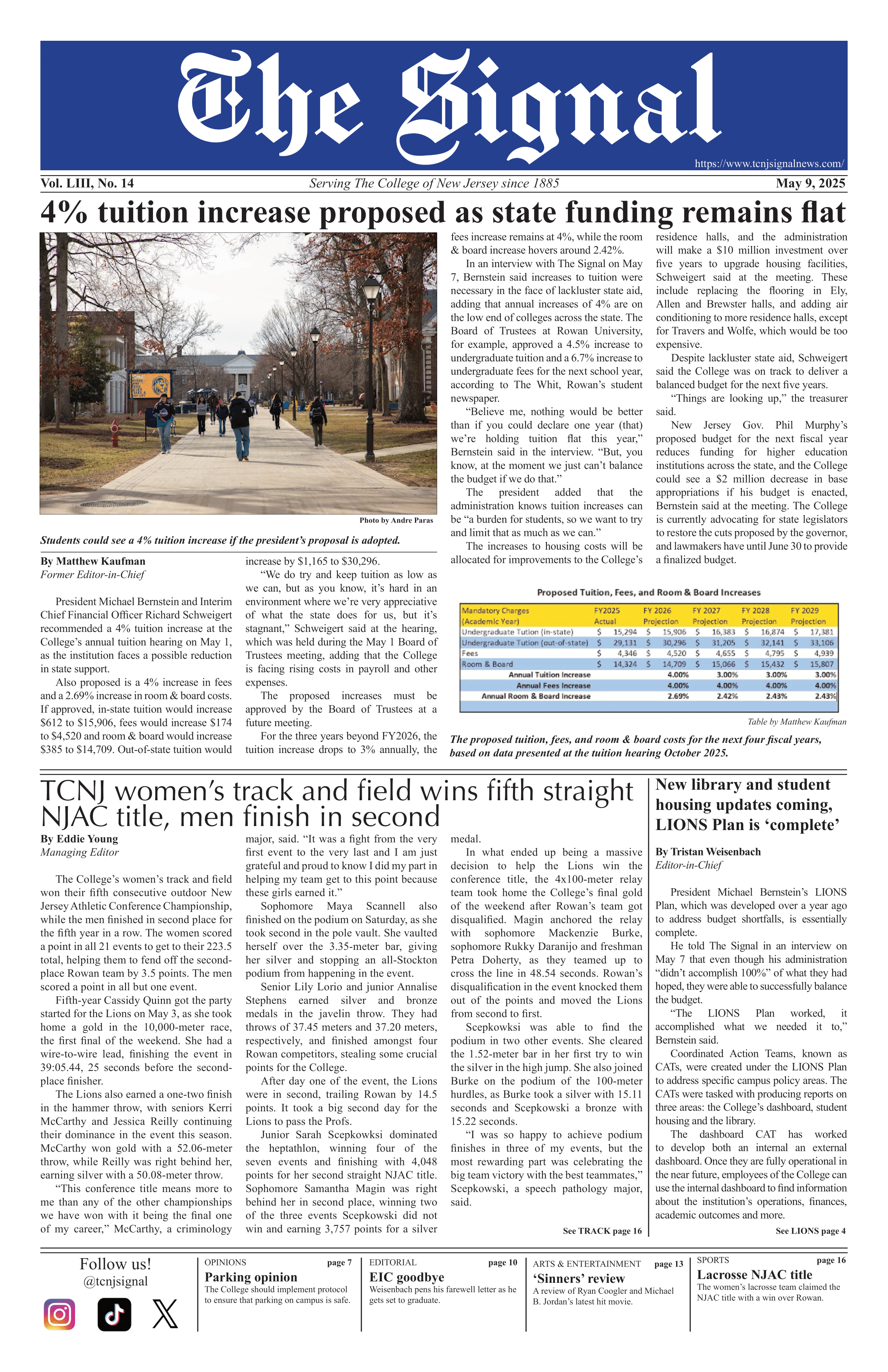Before the play began, a sense of division was well established in the Don Evans Black Box Theatre. The audience was separated on both sides of the stage, preemptively initiating the theme of opposition, the “us vs. them” mentality that dominates “Twelve Angry Jurors” — adapted with male and female actors from the teleplay “Twelve Angry Men” — by Reginald Rose.
All College Theatre’s take on the production succeeded in creating a mounting, often overwhelming, tension that engulfed the audience. The gray color scheme of the set and symmetrical seating of the jurors made for a stagnant atmosphere. This remained constant, as all action played out in the single room, heightening the claustrophobic sense and anxiety of the actors.
Shaquita Johnson, freshman Spanish and early childhood education major played the outspoken Juror Eight, who defies the majority and compels her fellow jury members to examine themselves for any “reasonable doubt” of the guilt of a young boy charged for his father’s murder. Johnson presented a calm, yet passionate demeanor, standing out as the most rational of the jurors. She carried herself with deliberate poise, delivering a commanding presence, despite her position as the one who stands alone for a majority of Act I.
The jurors alternated erupting with fits of anger, though few as violently as Juror Three, played by John Eldis, junior psychology major. The juror’s fury culminated in the final

scene of Act I, as Eldis lunged at Johnson, whose response, aided by the sudden blackout, was as fierce as Eldis was frightening. Eldis captured his character’s motive in supporting a guilty verdict, conveying his sympathy for the dead father and bias against the accused son. Though somewhat of a caricature of the typical, short-tempered bread-winner, Eldis’s explosive temper seemed natural as he expressed the juror’s rage in his relationship with his own son.
Shayna Stemmer, freshman elementary education major, as Juror Ten, delivered a high-pitched rage that was a bit harsh, but appropriate to her role, though her volume and tone, at times, fluctuated incongruously with the emotion her words expressed. Other characters, such as Juror Twelve, played by Jaclyn Trippe, freshman English and secondary education major, and Juror Eleven, played by Mark Smith, senior communication studies major, also dealt with potentially cumbersome accents, which they maintained throughout.
Sam Paternostro, junior communication studies major, offered comic relief as Juror Seven — rattling off baseball references and New York slang as second nature — playing a cartoonish Rat Pack wannabe, complete with a fedora. Justin Mancini, junior English major, as Juror Four, portrayed the polar persona, a stiff, methodical man who reminds the jurors repeatedly of the facts. His expressionless, carefully calculated movements made for humorous interactions with the other jurors.
Though the play is technically set in a New York City Juror’s Room in 1968, the dynamics of the characters and relevancy of the conflict — the possibility of an innocent person being unjustly convicted due to prejudice and circumstance — made the drama come to life. It’s a story that can be applied to any time — perhaps suggested by the vague character identifiers — and warns against the many sources of hatred.
Katie Brenzel can be reached at brenzel2@tcnj.edu.






